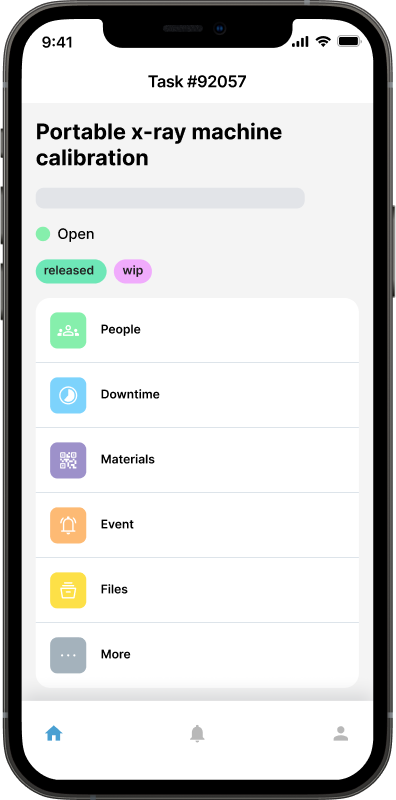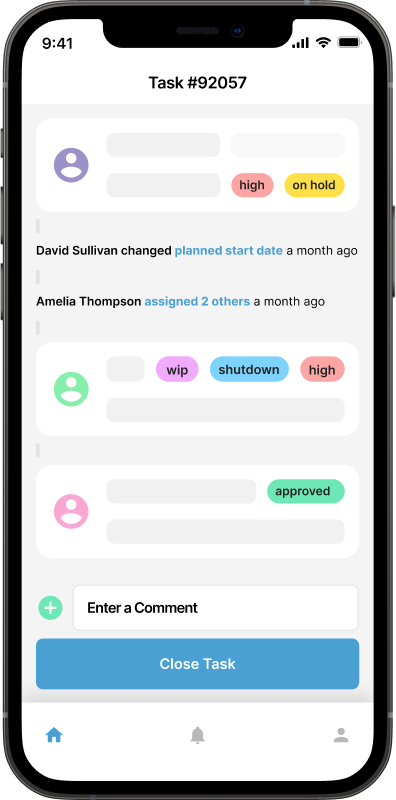Patient-Centric Care: Revolutionizing Healthcare Facilities with Work Order Fix Management

How Work Order Fix Management Enhances Patient-Centric Care
In the rapidly evolving healthcare landscape, the patient experience remains paramount. Patient-centric care takes a holistic approach, prioritizing patient needs and feedback at every stage. This approach goes beyond mere treatment. It aims to transform the very way in which healthcare systems operate. Who emerges as an unexpected hero in this transformation? Work Order Fix Management. Here's how.
Patient experience remains the golden thread that binds every element of healthcare. The rhythm of a hospital's heartbeat lies not just in its medical prowess but also in its operational efficiency. The emergence of Work Order Fix Management is reshaping this efficiency, ensuring every operation, every machinery hum, and every resource allocation pivot towards a singular goal: exceptional patient care.
Work Order Fix Management is Elevating the Healthcare Landscape
Enhancing Hospital Operations through Streamlining
In hospitals, the backend operations play a pivotal role in ensuring that the patient experience remains uninterrupted and of the highest quality. The essence of patient-centric care is to have operations that don't hinder but elevate the patient's experience. Here's how Work Order Fix Management is revolutionizing this aspect:
Facility Management and Maintenance: Modern hospitals and clinics with state-of-the-art equipment and systems require consistent monitoring and maintenance in an environment where every second counts and the breakdown of essential machinery or systems can be detrimental. With the implementation of Work Order Fix Management, we continuously monitor all equipment. This ensures that everything, from basic utilities to advanced medical equipment, remains in optimal condition.
Assured Safety and Comfort: By ensuring every piece of equipment functions seamlessly and infrastructure remains intact, Work Order Fix Management guarantees that the healthcare environment remains safe and conducive for patients. In simpler terms, patients can be confident that we meticulously manage their surroundings to provide the highest level of comfort.
The Power of Prompt Response
The role of responsiveness in healthcare can never be understated. Whether it's responding to a medical emergency or addressing a patient's concern about their room, speed is of the essence. Here's how Work Order Fix Management amplifies this responsiveness:
Proactive Approach: The system can often detect and address malfunctions or breakdowns before a patient or their family notices an issue. This capability minimizes downtime and ensures a seamless experience for patients during their stay.
Reinforcing the Patient-First Philosophy: When healthcare institutions can promptly and effectively respond to even the minor inconveniences patients face, it sends a strong message. It communicates the facility's unwavering commitment to prioritizing patient comfort and care.
Prudent Financial Management for Enhanced Patient Experience
Financial prudence in healthcare doesn't just relate to profitability. Instead, it directly correlates with the quality of patient care. Through Work Order Fix Management, hospitals are ensuring every penny counts towards better patient care:
Optimized Resource Utilization: Hospitals often house a plethora of resources, from medical supplies to human resources. Efficiently managing these ensures no undue wastage, and resources are always readily available when needed.
Reinvestment into Patient Care: Minimized wastage and optimized resource utilization generate savings that can be redirected. Whether investing in better medical technology or enhancing the infrastructure for patient comfort, these funds play a pivotal role in elevating the overall patient experience.
Integrating Work Order Fix Management: Best Practices
System efficiency and efficacy play a pivotal role in determining patient care quality. While the equipment and protocols in place are paramount, how they're utilized, refined, and integrated determines their true potential. Dive with us as we explore three integral pillars: the indispensability of rigorous training, the transformative power of feedback, and the future-forward approach to technological integration. Each of these elements not only enhances Work Order Fix Management.

Prioritizing Training and Skill Enhancement
The linchpin of any successful system integration in a healthcare setting, especially one as crucial as Work Order Fix Management, is the expertise of the staff maneuvering it. It's more than just knowing how to operate the system; it's about understanding its profound impact on patient care. Here's why a focus on training and development is essential:
Mastery over System Nuances: Every system comes with its intricacies. Those in managerial roles must have a cursory understanding and a deep-rooted knowledge of the system's workings. This ensures that the system is utilized to its fullest potential, extracting maximum benefits for the institution and, by extension, the patients.
Consistency in Service Delivery: Regular training sessions aim to create a standardized method of approach. When all staff members are on the same page, it minimizes discrepancies in service delivery, ensuring that every patient receives consistent care and attention.
The Significance of a Robust Feedback Mechanism
Feedback is the bedrock of continuous improvement. In healthcare, where the stakes are high, leveraging feedback can mean the difference between good and excellent patient care. Here's why feedback mechanisms are invaluable:
Real-time Insights: Patients and their families are at the frontline of care delivery. Their experiences offer a unique perspective, often highlighting areas that may not be immediately evident to healthcare providers. By proactively seeking their input, hospitals can get a real-time assessment of their operations.
Refining Operational Protocols: Feedback isn't just about identification; it's about action. By utilizing the insights gained from patient and family feedback, healthcare institutions can recalibrate their Work Order Fix Management protocols. This iterative process ensures that the system remains in sync with the evolving needs of its users.
Harnessing the Power of Technological Integration
The age of technology has ushered in tools and platforms that can exponentially amplify the capabilities of traditional systems. Work Order Fix Management is no exception. Here's the potential of technology-driven integrations:
The Rise of Predictive Analytics: Traditional systems react; modern systems predict. By integrating predictive analytics, Work Order Fix Management systems can forecast potential breakdowns or maintenance needs. This proactive approach ensures uninterrupted service delivery and enhances the patient experience.
Leveraging Artificial Intelligence (AI): AI isn't just a buzzword; it's a revolutionary tool. In the context of Work Order Fix Management, AI can optimize resource allocation, manage schedules, and even automate routine tasks. By reducing the manual workload, healthcare providers can focus on what truly matters - the patient.
The Tangible Benefits of Embracing Patient-Centricity
Embracing patient-centricity isn't just a buzzword; it's a transformative strategy with palpable benefits. From fostering better health outcomes to reinforcing trust and optimizing operations, the merits of a patient-centered approach are profound and far-reaching. Briefly, these are the tangible advantages that underscore the importance of this paradigm shift.
Improved Patient Outcomes: A comfortable environment and swift response times can significantly enhance recovery rates and overall patient satisfaction.
Increased Trust: "Promptly addressing patients' concerns builds trust, a foundation in the patient-doctor relationship.
Operational Excellence: Streamlined operations lead to improved efficiency, reduced errors, and improved service delivery.
The Future of Healthcare: A Collaborative Approach
In healthcare's vast, dynamic landscape, achieving the zenith of patient care is a relentless endeavor. The challenge isn't just about medical acumen and integrating the right systems to support this mission. Enter the realm of the work order system, a digital powerhouse in the guise of Work Order Fix Management, redefining the operational spine of healthcare institutions. With an intricate interplay between operational efficiency and the symbiotic relationship of Fixed Asset Management, the narrative shifts from simple care to holistic patient-centricity.
In embracing this paradigm, healthcare facilities are amplifying their operational excellence and establishing a resilient trust bridge with their patients. It's a transformation that is both tactile and profound. By intertwining robust systems like Work Order Fix Management with the heartbeats of every hospital—its patients—healthcare institutions are forging a future that is both efficient and profoundly empathetic.
The alchemy of integrating technology with empathy underscores the future of healthcare. It's not just about reacting to needs but predicting and preempting them. The fusion of patient-centric care, powered by tools like the work order system and Fixed Asset Management, embodies a future where patients aren't just recipients of care but are at the heart of the care paradigm.

